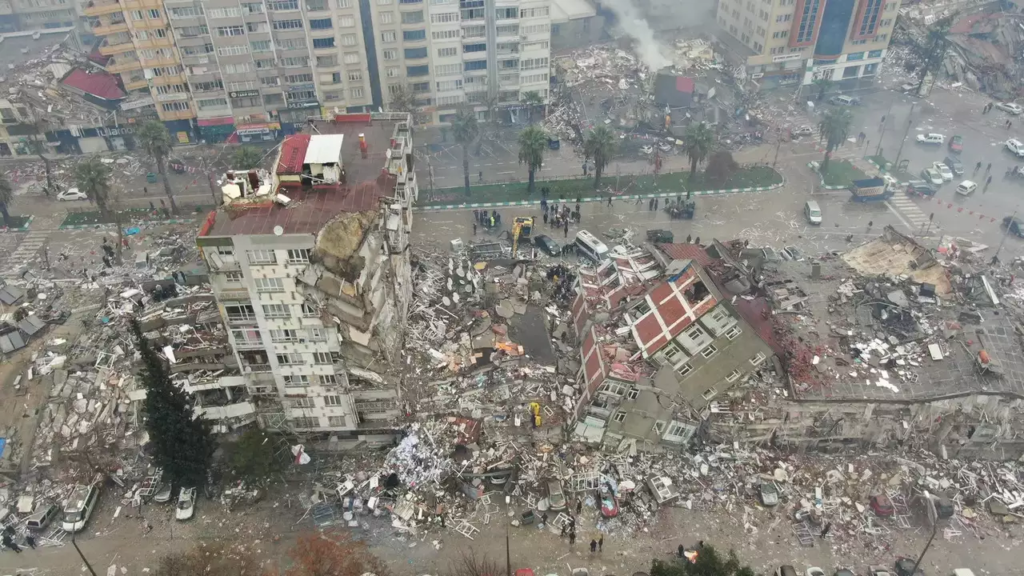The Earth’s tectonic plates are in a constant state of motion, colliding, sliding, and pulling apart. When stress builds up to critical levels along these boundaries, the abrupt release of energy sends shockwaves rippling through the Earth’s crust—earthquakes.
Throughout history, catastrophic earthquakes have reshaped landscapes, devastated communities, and forever altered the course of human events. Let’s delve into the top 10 most powerful earthquakes ever recorded, as ranked by the moment magnitude (Mw) scale:
| Rank | Earthquake | Location | Date | Magnitude (Mw) |
|---|---|---|---|---|
| 1 | Valdivia, Chile | Chile | May 22, 1960 | 9.5 |
| 2 | Alaska, USA | Prince William Sound | March 27, 1964 | 9.2 |
| 3 | Sumatra, Indonesia | Indian Ocean | Dec 26, 2004 | 9.1 |
| 4 | Tohoku, Japan | Off East Coast of Honshu | March 11, 2011 | 9.1 |
| 5 | Severo-Kurilsk, Russia | Kamchatka Peninsula | Nov 4, 1952 | 9.0 |
| 6 | Chile | Bio-Bio | Feb 27, 2010 | 8.8 |
| 7 | Rat Island, USA | Aleutian Islands | Feb 4, 1965 | 8.7 |
| 8 | Assam, India | Eastern Xizang-India border | Aug 15, 1950 | 8.6 |
| 9 | Aleutian Islands, USA | North Pacific Ocean | April 1, 1946 | 8.6 |
| 10 | Indian Ocean, 2012 | Off West Coast of Sumatra | April 11, 2012 | 8.6 |
1. Valdivia, Chile (1960)
The largest earthquake ever recorded, this monster caused widespread devastation across Chile, killing thousands and triggering a massive tsunami that reached as far as Hawaii and Japan.
Geography & Reason: Located along the notoriously active boundary between the Nazca and South American tectonic plates, Chile is a hotspot for seismic activity.
2. Prince William Sound, Alaska (1964)
This major quake devastated large portions of Alaska and unleashed a destructive tsunami.
Geography & Reason: This megathrust earthquake occurred in a subduction zone where the Pacific Plate slides beneath the North American Plate.
3. Sumatra, Indonesia (2004)
The Indian Ocean earthquake and tsunami of 2004 was one of the deadliest natural disasters in history, claiming hundreds of thousands of lives across several countries.
Geography & Reason: This earthquake occurred at the interface between the India Plate and Burma Plate.
4. Tohoku, Japan (2011)
A destructive earthquake that triggered a devastating tsunami, causing the Fukushima nuclear disaster.
Geography & Reason: Situated on the volatile Pacific Ring of Fire, Japan frequently experiences earthquakes. In this case, the Pacific Plate slid beneath the Okhotsk Plate.
5 – 10 (Descriptions for Severo-Kurilsk, Chile (2010), Rat Islands, Assam, Aleutian Islands, Indian Ocean):
- Severo-Kurilsk, Russia (1952): A powerful megathrust earthquake causing a significant tsunami.
- Chile (Maule Earthquake) (2010): A major earthquake causing widespread damage and loss of life across Chile.
- Rat Islands, Alaska (1965): Megathrust earthquake in the remote Aleutian Islands, generating a tsunami.
- Assam, India/ Tibet (1950): Devastating earthquake, among the largest ever recorded on land, with effects felt across a vast area
- Aleutian Islands, USA (1946): A powerful earthquake generating a destructive tsunami that reached Hawaii.
- Indian Ocean (Sumatra)(2012): One of the largest of several earthquakes in the Sumatra region within the last two decades.
Understanding Earthquakes: Key Points
- Earthquakes are fundamentally caused by the movement of tectonic plates.
- The most powerful earthquakes often occur in subduction zones.
- The Richter scale has been superseded by the more accurate moment magnitude scale (Mw).
- Tsunamis triggered by earthquakes can be even more destructive than the ground shaking.


